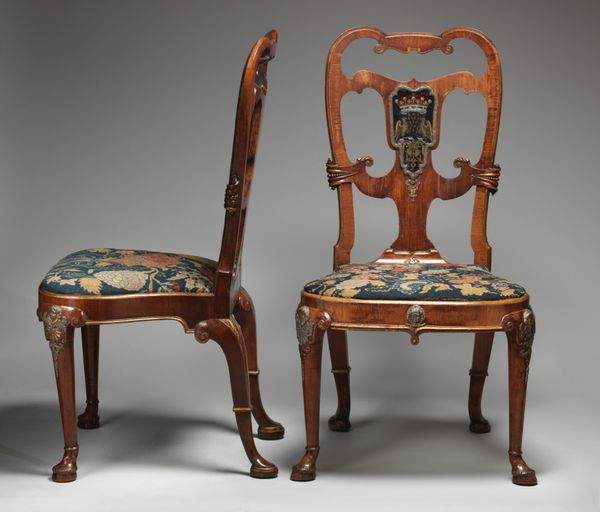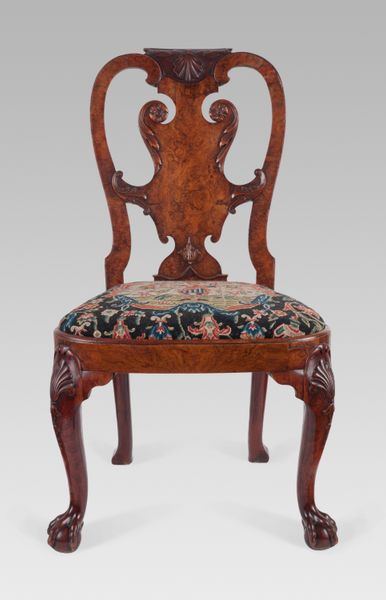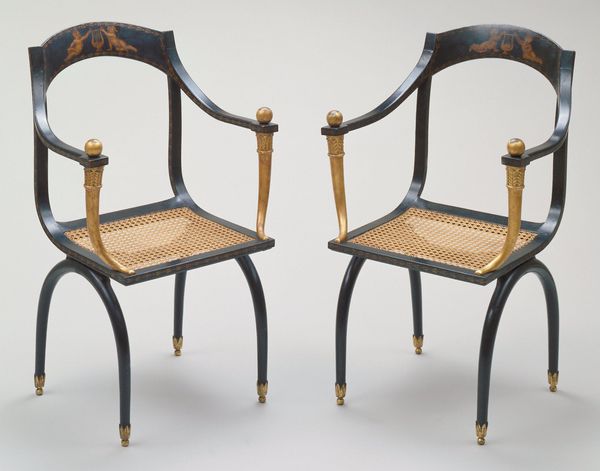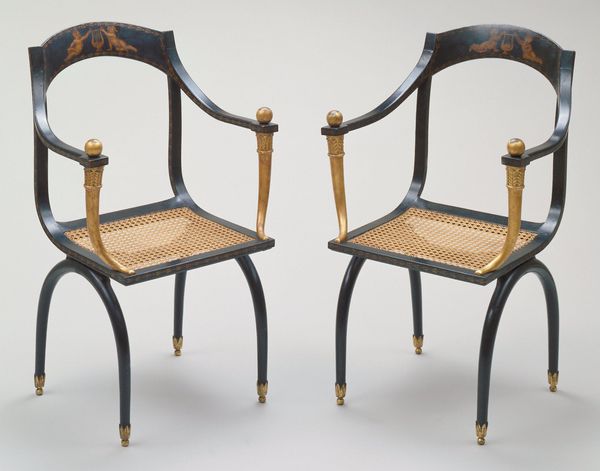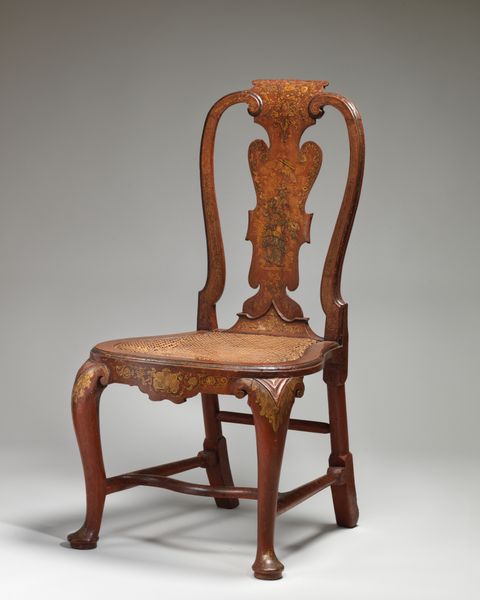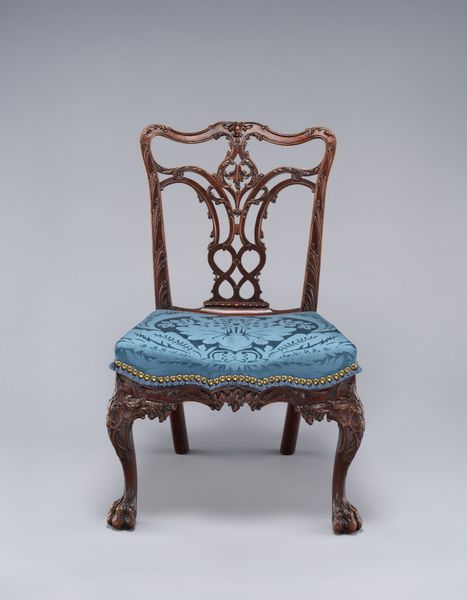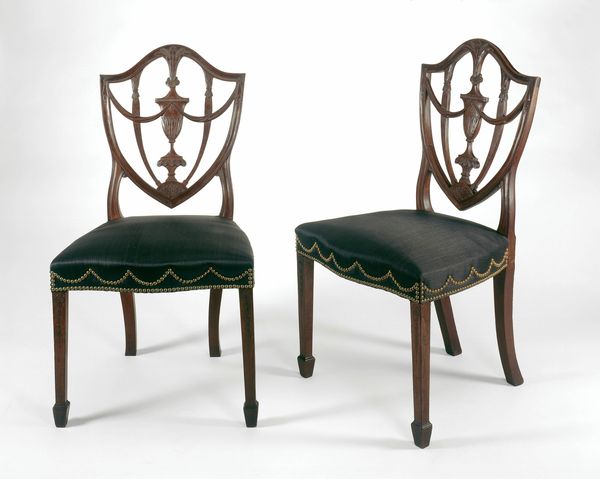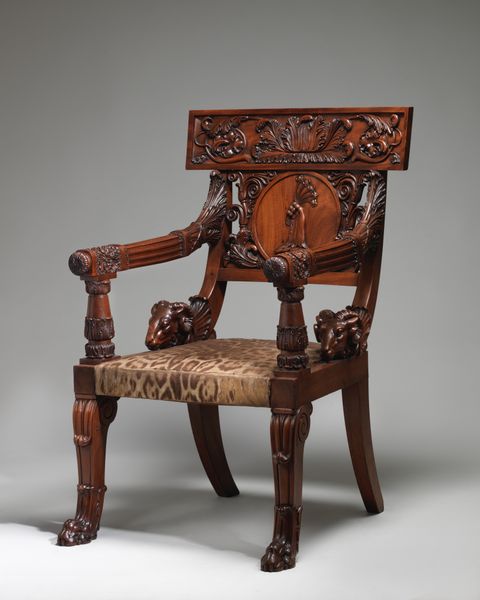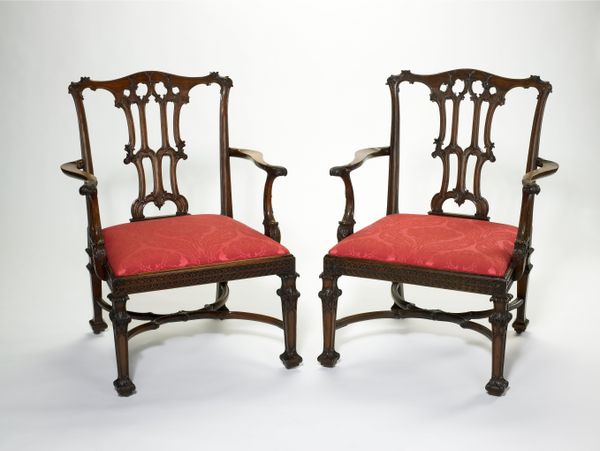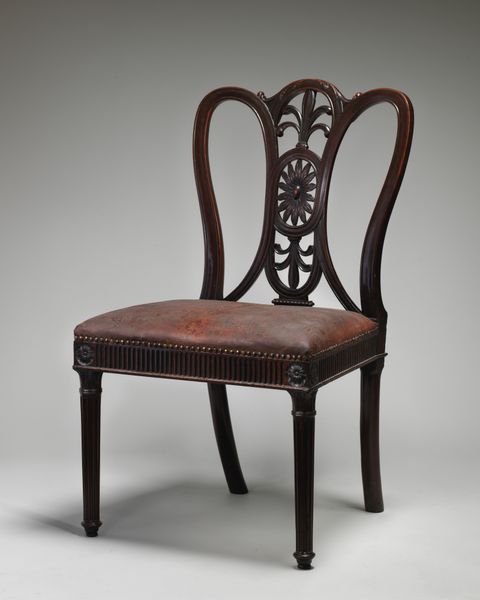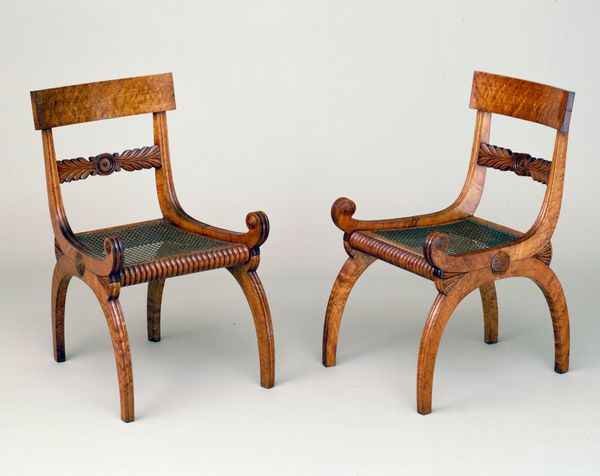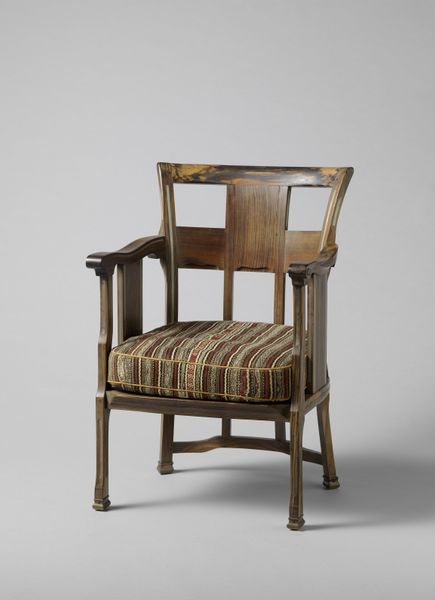
sculpture, wood
#
baroque
#
furniture
#
sculpture
#
wood
#
decorative-art
#
rococo
Dimensions: Overall (each): 39 1/2 × 23 × 19 1/2 in. (100.3 × 58.4 × 49.5 cm)
Copyright: Public Domain
Editor: Here we have a Side Chair, crafted around 1750 to 1765, attributed to Thomas Chippendale. The materials are wood, and it resides at the Metropolitan Museum of Art. The intricate woodwork immediately catches the eye! What can you tell us about this chair from a materialist perspective? Curator: This chair speaks volumes about 18th-century labor and material economies. Chippendale, while celebrated, relied on skilled artisans for carving, joinery, and upholstery. The wood itself would have been sourced through complex trade networks. The ornate Rococo style is not just aesthetic; it reflects the consumption patterns of the wealthy elite. Editor: So, the very design highlights socioeconomic divisions? Curator: Precisely. The cabriole legs and pierced back aren't simply decorative flourishes; they demanded highly specialized labor, marking this chair as an object of luxury attainable only by a privileged few. What about the upholstery? Does that factor into our understanding of materiality? Editor: Absolutely. The floral tapestry isn't just visual appeal; it is produced through textile manufacturing of the era and speaks to raw material consumption from cotton plantations worked by enslaved populations. It’s a crucial element in understanding this chair’s place within a broader system of labor and production. Curator: Exactly. By examining the materials, the techniques, and the social context of production, we understand the chair less as a singular artwork and more as a node within a vast network of power and consumption. We can go further to compare factory-made chairs available now in furniture retailers: these current models benefit from a longer manufacturing tail of exploitative and unjust economic practices, that are very similar in structure. Editor: So it’s less about Chippendale's genius and more about understanding the systems that made this kind of creation possible. It really reframes how you appreciate these decorative art objects. Thanks for shifting my perspective on this! Curator: Indeed! Every object, from a humble chair to a grand sculpture, tells a material story if we bother to look.
Comments
No comments
Be the first to comment and join the conversation on the ultimate creative platform.
